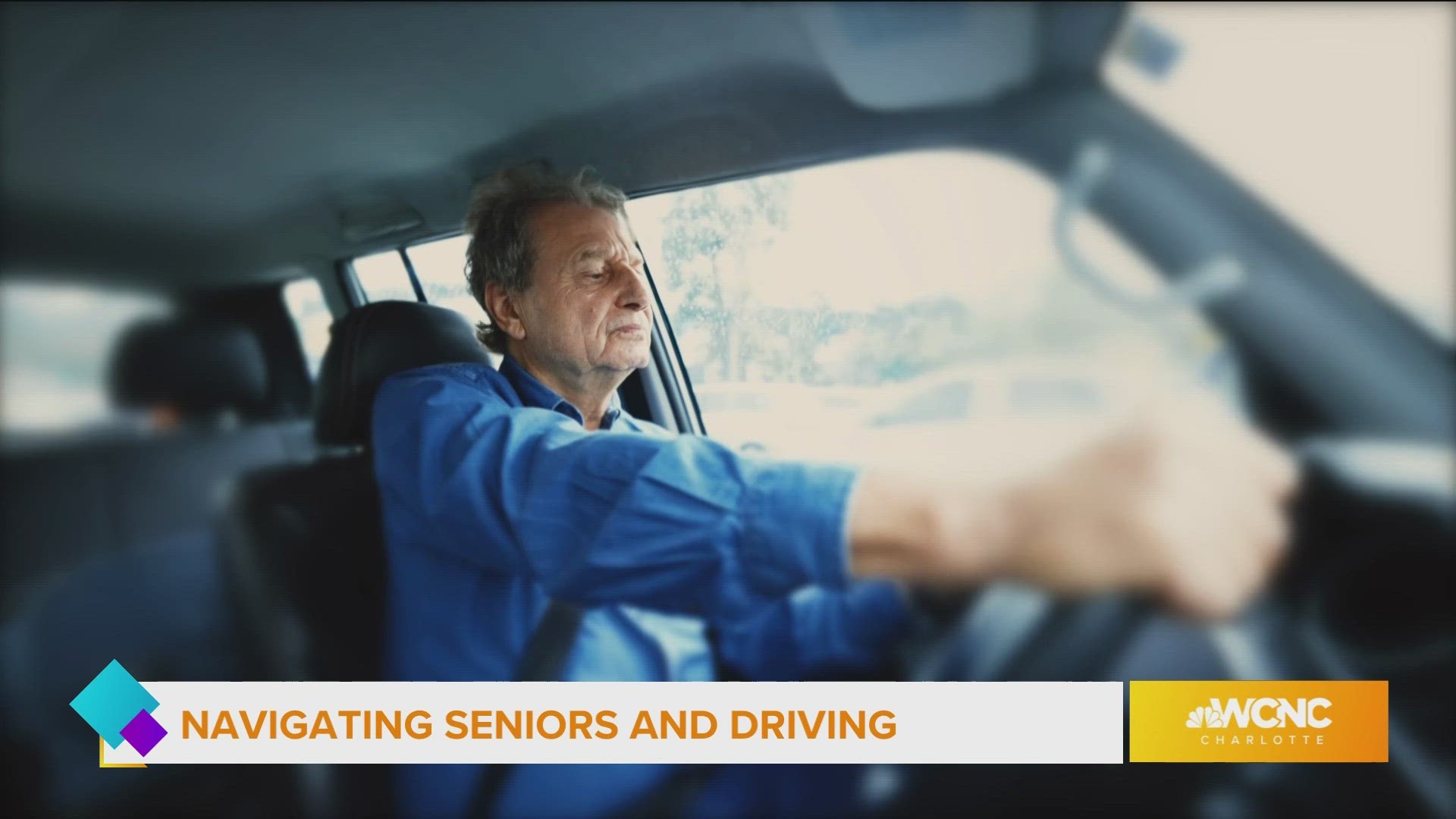CHARLOTTE, N.C. — This morning we tackled a topic many families are facing, and discussing, and a question no one wants to ask: How old is too old to drive?
Aging Expert Anthony Cirillo joining us to discuss the topic further. To learn more click on: sagestream.live or theagingexperience.com
More older adults are staying on the road than ever before, but they also at greater risk. There are almost 50 million drivers in the United States over 65, a 68% increase from 2000. Here to help us through this issue is friend of the show and aging expert Anthony Cirillo.
1. Why is this an emotionally charged issue?
a. What if I told you that tomorrow, just for a day, you would all of a sudden not have a car available? What if I said a week? You can start to see how your independence would be affected.
b. A car represents different things to people…a way to get places for some…status and identity…freedom and spontaneity. What it represents also says a lot about how you approach the situation.
c. Just because you are older does not mean you have to stop driving. We see so many distracted driving accidents from people on phones or texting and that is not representative of how seniors drive.
2. How can you tell when a person is starting to have problems?
a. If you are geographically close by, the best thing is to observe directly. In other words, go for a ride-along.
b. Distinguish between serious signs of trouble and less so. For example, confusing the gas with the brake is serious. Riding the brake maybe less so. If serious take immediate action. If less so, observe over time, take notes and look for a consistent pattern. These facts will help when having a conversation.
c. Things to look for –
i. Struggling to change lanes
ii. Problems turning particularly left turns
iii. Driving too slow or too fast
iv. Reaction time
v. Other drivers honking
vi. Hitting curbs
vii. Following signals
viii. Scrapes on cars
d. Often older adults will start self-correcting, not driving at night, in bad weather, on freeways. My mom started going places by making all right hand turns. Praise these behaviors but also take them as a sign that things might be changing.
e. Check in with their friends and their physician or pharmacist as medication changes can impact driving.
3. Does having a dementia diagnosis automatically rule you out for driving? a. A 2017 review of driving crash risks said that dementia had medium to large effects on driving impairment. It also found that people with dementia had a higher chance of failing a road test compared to those who don’t have the disease.
b. The problem is that we have no way of truly assessing someone’s driving capabilities other than anecdotal information.
c. Researchers at the University of Queensland in Australia are working with people living with dementia to develop an online driver safety test that can be performed by GPs in their surgeries.
d. That would take some of the emotion out of the decision and allow a more fact-based assessment. But that will not be ready until 2025.
e. The fact is there are people with dementia who could still drive and others who cannot and sometimes the ones who can are often sidelined and the ones who can’t are
still driving.
4. How do you start the conversation?
a. Ideally you start it over time not in a crisis situation.
b. You should initiate casual conversations. Look for an opening in something they say as well. Example, watching the news and they are reporting on an accident. Or the weather is turning bad and how it might affect driving.
c. Don’t gang up. Studies have shown that this kind of conversation is best initiated by a spouse then by adult children or a physician.
d. Have empathy. Validate their emotions and go back to why a car is important for them. So for example if it is to get places, then have a plan in place for alternative transportation. If it is about status and identity, have the car parked at their house and let others use it to drive them. If about freedom and spontaneity, plan spur of the moment trips.
e. Provide the facts about what you have observed.
f. AARP Resource – Talking with Older Drivers
5. So what if you ultimately have to take the keys. Then what? What are some ways to ease the transition?
a. Have a plan. It is so much easier today with Uber and other services specifically designed for seniors.
b. Look up N-C-211. NC 211 is an information and referral service provided by United Way of North Carolina.
c. In your conversation and planning first seek to see if there is a way to keep the person behind the wheel.
d. Make modifications -
i. Not driving at night
ii. Avoiding I77 and I85, freeways.
iii. Not driving in bad weather.
iv. Designated places they can drive safely and easily
e. Caregivers need to be especially aware of the burden this can place on yourself but also the opportunity to spend more time with a loved one. But you shouldn’t be the sole source.
f. Alternatives transportation options available.
Charlotte Today is a local lifestyle and entertainment show where you'll learn everything about the Queen City with hosts Mia Atkins and Eugene Robinson on WCNC Charlotte live weekdays at 11 a.m.
From what’s trending to local restaurants, events and entertainment, you’ll find it all on this show.
Charlotte Today also features sponsored content by local and national businesses. Are you a business interested in advertising with us? Go to WCNC.com/advertise or call now (214) 977-6001
If you have a question for the Charlotte Today team, feel free to email them at charlottetoday@wcnc.com

